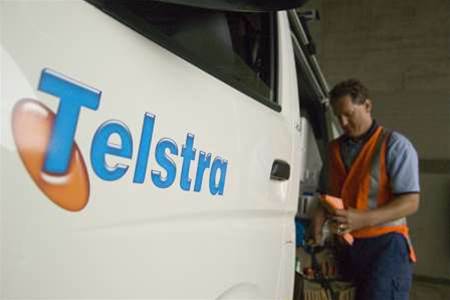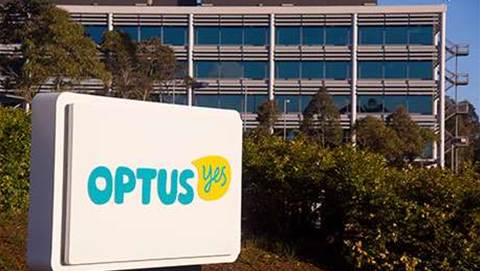Telstra’s field service team is bracing for a backlog of ‘assurance’ work - and impatient customers - as COVID-19 restrictions are eased, after weeks of not being able to receive jobs.

Field service principal Digby Wilson told an SAP forum at the end of April that field services work - comprising activations (orders) and assurance (faults) - was recorded through call centres in India and the Philippines, where lockdowns have wreaked havoc on operations.
Most telcos have been struggling with capacity issues in both locations since late March.
Assurance generally refers to fault ticket response and service restoration.
“Our activations and assurance call centres offshore in the Philippines and India employ roughly 14,000 people,” Wilson said.
“That dropped down by 90 percent [due to lockdowns]. So, we weren't getting work in the front door.”
Wilson said field services had to act quickly “so we don't hemorrhage” as work dried up.
“We've had to do things like stand down contractors, and we've enforced mandatory leave across the workforce, reducing the leave liability and freeing up cash,” he said.
“We have [also] increased activations. Most of our work has [traditionally] been assurance, and as those assurance calls aren't coming in, we had a backlog of activations we could get through.”
Though the extent of missed assurance jobs is still unclear, Wilson expects the skew towards activation work in the period will ultimately catch up with the telco - and his team.
While customers had been tolerant of the extraordinary circumstances presented by COVID-19 - which may include cutting companies more slack than usual - Wilson was cognisant that goodwill would eventually run out.
It may already have, he noted, but this was not yet being shown in the telco’s Net Promoter Scores (NPS), a common measure of customer satisfaction.
“We have done a lot of … media releases about what we're doing with the community so they have an appreciation, but their patience will run out,” he said.
“Now, our problem is that our volumes have dropped so significantly, we're only NPS testing our customers that we've served.
“So there's probably a whole bunch of customers out there that are still waiting on us, that are pissed off, but we can't feel that yet, because of the way the NPS system is working.”
To keep some work coming into field services during the period, Wilson said some technicians had been moved to “front-of-house and back-of-house functions”, including frontline call centre roles and to coordinate colleagues still out in the field.
Others had been temporarily redeployed elsewhere within Telstra: “onto things like outage restoration and capital projects”.
“What that means is now we've redistributed our resources into other areas, and our presence out there in the field isn't the same type: they're working on different things, and supporting the business,” Wilson said.
That means field services work will need to resume gradually, rather than all at once.
“What we've got to be careful of is switching all those light switches on at once, and overloading the circuit,” Wilson said.
“We can't allow all the front-of-house or front entry functions to come online all of a sudden.
“The capacity of the systems and the front-of-house is far greater than the field [services team]. It'll move a bottleneck into the field.
“So we are planning to stagger functions coming on, bit by bit.”
Wilson said that Telstra would also introduce automation where possible to help improve throughput and return to field services volumes as quickly as possible.
Move to assisted self-install
Telstra has modified its self-installation option for home broadband customers into an “assisted” offering, and trebled the field services team that supports it.
Wilson said “not many” customers had been choosing self-installation when it had been unassisted, leading to the change.
Telstra offers several installation options, including a “professional installation” for $240 and self-installation for more “tech savvy” users.
“[Traditionally when] we provided home broadband, it was always professionally installed,” Wilson said.
“We [then] gave customers the option of doing self-installs but not many picked it up. So we introduced an assisted self-install, and that would be where the technicians will contact the customer and walk them through the steps that they need to take and troubleshoot to get their service up and going.
“Now we have put that team on steroids. We've tripled the size of the team and so they're able to assist many more customers in getting them connected.”
Wilson said that video support was being performed over Microsoft Teams.
New in-field practices
For field service technicians still making home visits, engagement models have had to change considerably.
“Their call-on-approach questions are different now. We call [customers], ask them if they're in isolation, ask ‘have they been exposed?’, [and] explain that we need to practice social distancing,” Wilson said.
“Do not shake their hands. Make sure there aren't any kids in the room, minimise the people in the room that they're working in.
“We also get the technicians to wipe down the worksite with antibacterial wipes, wipe down their tools, minimise time in the home, and wash with hot soap and water, which is the preference.
“The hot soap and water has been installed in their vehicles so they have it on tap.”
Wilson also said that flu immunisation could become a prerequisite for those doing home visits.
“We're running a program to get all our staff immunised, and probably I would see this as becoming a prerequisite to the job, like a driver's license where you aren't allowed into some facilities if you don't have the flu shot, because you're putting vulnerable people at risk,” he said.


.png&h=140&w=231&c=1&s=0)




 iTnews Executive Retreat - Security Leaders Edition
iTnews Executive Retreat - Security Leaders Edition












_(1).jpg&h=140&w=231&c=1&s=0)



